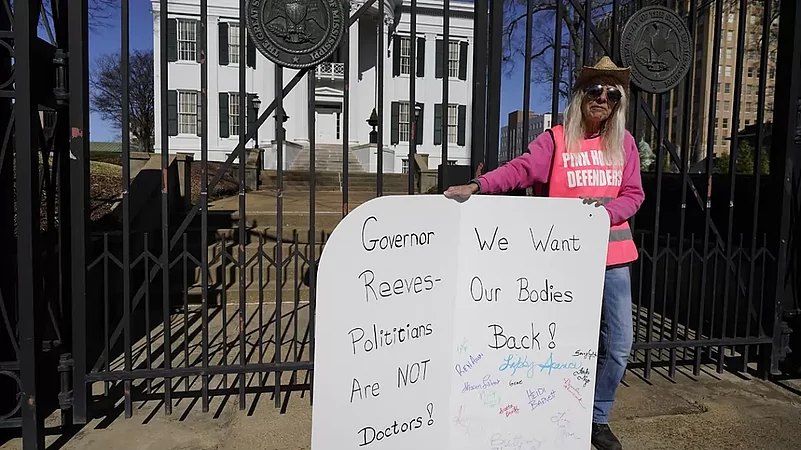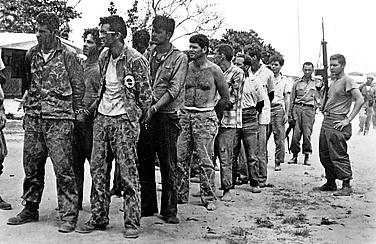A major contributing factor to the global health crisis – abortion – is largely a consequence of the blanket problem of gender inequality. Where on the one hand, because of the disproportionate imbalance in power, laws, practices and beliefs, sanctioned, imposed and cemented by men have left women with little or no agency. On the other hand, the misappropriated and outdated impositions further perpetuate the gender divide – as can be gauged from the recent Gender Snapshot Report 2022 by the United Nations. The report underlined a lack of health infrastructure and associated legal support as one of the several impediments to SDG 5 - Global Gender Equality.
While one might reason the state of affairs to be better in developed countries, the 2022 overturn of the Roe vs Wade ruling in the US has left the world to do a double take on the global stand on abortion and the right to one’s agency. On June 24, 2022, the US Supreme Court retracted the landmark ruling of 1973 that gave access to abortion rights to US citizens, dismantling the 50-year-long legal protection and then vesting the power to curtail and even outlaw abortion rights on individual states.
Controversy Around The Term ‘Abortion’
Abortion is not a ‘newfound’, modern practice but rather has been in existence since antiquity - records of abortion techniques and general reproduction regulations date back to nearly 2700 BC in China and 1550 BC in Egypt. Nevertheless, induced abortion, which is deemed voluntary in most cases, calls for disagreement across communities. It is likened to murder, as certain communities believe the foetus is disallowed to defend itself. The controversy prominently stems from the question of - who has the right to decide.
Abortion as a ‘moral’ issue takes precedence over abortion as a ‘medical’ issue. A 1992 survey conducted by the Journal for Scientific Study of Religion (JSSR) pointed out that the attitude towards abortion strongly stemmed from a belief that life begins at conception, a belief in privacy rights, and religion. Social traditionalism or conservatism was identified as a contributing factor in cementing the presentiment of aversion to abortion and attaching a stigma to the topic. Another research paper by the National Library of Medicine presents religion, followed by sexual permissiveness and women's employment as major contributors to the controversy over abortion.
Considering the heavy emotive and political overtones of the issue, the medical faculty – a major stakeholder in the discussion – branches out with variegated opinions on the risk of clandestine abortions carried out unprofessionally in the absence of the right instruments and expertise. But they eventually get caught up in the political and social atmosphere of the country, rendering their contribution to the dialogue insignificant.
‘Pro-Choice’ Vs ‘Pro-Life’
The longstanding debate on induced abortion reflects a universal divide predicated on political, religious, moral, medical and ethical grounds, wherein public opinion varies with the quoted raison d’etre. Right to abortion is mostly accepted in cases of rape, foetal abnormality or when it puts the woman’s health in jeopardy. However, it is condemned when the reasons cited are family size, poverty or marital status.
Between the two schools of thought, ‘pro-life’ holds abortion morally wrong and vouches for the right to life. ‘pro-choice’, on the other hand, vouches for individual privacy and the freedom to choose. Pro-choice authenticates a woman’s autonomy over her body, whereas pro-life presents itself as a voice for the voiceless – the foetus, deserving of legal protection, exclusive from the will of the mother. Pro-life bases its argument and ideology on the philosophical tenet of the beginning of the ‘personhood’ of a foetus. On the contrary, Pro-choice bases its opinion on bodily privacy and autonomy. While women with means can and will find a way around the cynical reception of the subject, and its subsequent consequences, women of colour, poor economic standing, migrants or those displaced in conflict-ridden areas, are doubly disadvantaged – with no loophole to exploit.
Abortion Laws Around The World
In countries like the US and Canada, abortion predominantly manifests itself as a debate between the Republican and Democratic ideologies, often manoeuvred tactfully to incite the targeted vote bank, leaning against the pillar of religion.
But abortion laws differ from country to country, with some outright banning to some legally circumscribing the practice within the purview of stringent rules and regulations. Countries where abortion is illegal, witness high rates of maternal mortality and morbidity. The countries with an abortion ban in place are – Andorra, Dominican Republic, Egypt, El Salvador, Haiti, Honduras, Iraq, Jamaica, Laos, Madagascar, Malta, Mauritania, Nicaragua, Palau, Philippines, Republic of the Congo, San Marino, Senegal, Sierra Leone and Suriname.
At the same time, about three dozen countries allow abortion to either save the life of the mother or for broad social and economic reasons like rape, incest and other specifics. Other permissible exceptions that allow abortion are when it’s on request, endangering the woman’s physical or mental health, or a complication of foetal impairment.
While countries in Latin America like Columbia, Mexico and Ecuador, have also taken steps to decriminalise abortion, it is yet not legal. Chile, in 2017, retracted a 30-year-old constitutional ban on abortion and allowed interventions in cases of rape and danger to the life of the mother or child. El Salvador, in Central America, banned the procedure without exception in 1998 and continues to maintain the same.
Many countries in Africa and the Caribbean follow suit and stick to the colonial-era anti-abortion laws. Zambia, Cape Verde, South Africa and Tunisia allow abortion with a gestational limit of 12 weeks (about 3 months).
In Europe, the watershed referendum issued in Ireland, decriminalizing abortion has been stated as a notable victory. However, Poland in 2021 effectuated a constitutional court decision that prohibits abortions carried out due to foetal defects. And Malta prohibits abortion completely, even if the woman’s life is at risk.
Except for Israel, almost no Middle Eastern country has legal laws for abortion. UAE allows an exception if the pregnancy endangers the woman's life or there is evidence that the baby will not survive. The situation remains similar in Indonesia and Pakistan. Abortion in the Philippines has been prohibited for more than a century even as about 1,000 Filipino women die each year from complications.
The stringent abortion laws in these countries have specifically been attributed to religious conservatism.
But it does not end there. Abortion laws in many countries including those mentioned above hold women and, in some cases, even those who help facilitate, accountable for an attempted abortion that violates the designated law. Women are answerable to the court and can be issued a sentence or charged a monetary recompense in accordance with the degree of the violation registered.
Ramifications Of Abortion Ban
The consequences of an abortion ban are largely irresponsibly overlooked. Abortion laws do not particularly discourage abortions but only deter safe abortion practices. According to a US-based reproductive health non-profit, The Guttmacher Institute, the abortion rate is 37 per 1,000 people in countries that prohibit abortion altogether or allow it in cases with exceptions and 34 per 1,000 people in countries that broadly allow for abortion. The difference is evidently negligible, further highlighting the perils of unsafe abortion practices.
The World Health Organization (WHO) defines unsafe abortion as “a procedure for terminating an unintended pregnancy carried out either by persons lacking the necessary skills or in an environment that does not conform to minimal medical standards or both.” They provide a figure of approximately 25 million unsafe abortions taking place every year, of which developing countries constitute a majority. WHO cites the same as the third leading cause of maternal deaths worldwide. Unsafe abortions can result in incomplete abortion, haemorrhage, infections, uterine perforation and damage to the genital tract and internal organs.
According to the Center for Reproductive Rights, a global advocacy group opposed to abortion restrictions, over 90 million women worldwide, 5 per cent of the total women population, live in countries where they cannot access abortion. Inaccessibility to medical services because of the presiding regulations is the reason for fatal casualties. These statistics can be prevented completely by having in place a supportive legal framework and access to a well-functioning health system. Nevertheless, not all hopes are lost as the Center of Reproductive Rights documents ‘monumental gains’ made, with more than 50 countries liberalising their law over the past several decades.


























